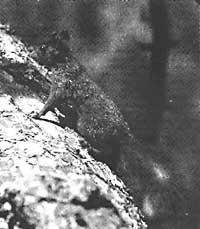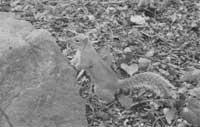Natural rivals of biodiversity
2000/09/17 Carton Virto, Eider - Elhuyar Zientzia
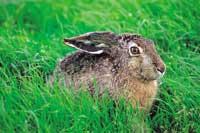
Since time immemorial the vultures have been kings of the heavens of India. There are no cities or villages without alimoche. There may be more than 500 units in a landfill or in a single slaughterhouse. Or they could have been. The Sai group can clean the buffalo body in 20 minutes. Or could. In fact, the griffon vulture that could previously be found anywhere has disappeared in a few years in India, and the other vulture species have not had the same fate, but have not been as abundant and large as the griffon vultures, nor can they replace them. Street dogs now feed on the remains of the dead cattle.
The director of the Bombay Natural Sciences Association believes that the griffon vulture is killed by some illness. This seems, at least, according to all the data collected. But what? And how?
Plagues everywhere
The leonate vultures of India are not the only animals fallen in the clutches of pathogens. The cattle imported in 1887 brought Kenya the cow pest and at the age of 10 finished with antelopes, kunus and other ungulates from southern Africa. Disproportionate fishing pushed black seals into the North Sea in 1988. These carried the moquillo virus and two thirds of the normal seals of the North Sea died. Last year the West Nile virus, a deadly virus that attacks birds, appeared in New York City and we knew all over the world that it killed seven people. But the same virus only killed thousands of strings in New York City and migratory birds have already spread throughout North America.
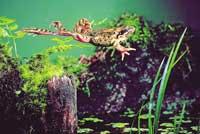
However, disasters caused by pests are rare in wild animals, and are even considered extraordinary events. However, the pathogens of animals move more and more easily around the world, as the global trade of plants, food and animals and human mobility is increasing. The massacres caused by deadly infections spread throughout the planet: from the marine ears to the cracks, from the corals to the bees and from the sardines to the flamingos.
However, most authorities, ecologists and ecologists have focused their efforts and research on pollutants. Chemical pollutants and not diseases are the main threat of global ecosystems. It is true, but not all the truth. In the case of amphibians, for example, experts have spent a lot of time searching for an agent that is causing the disappearance of frogs, toads and cordilleras from all over the world, in search of some cause related to pollution, and have finally seen that the main culprit is a pathogen: amphibians are dying from the plague.
In balance with the disease
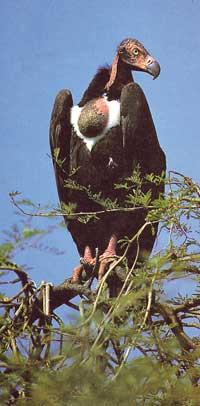
The belief that animals and pathogens live in a favorable balance, that is, diseases are part of the wild life and rarely become worrying. When the new pathogen attacks wild animals it is considered that the damage is provisional, since the too large slaughter does not benefit the pathogen. Guests who will survive are required to move from generation to generation and survive through it and its descendants. Consequently, the parasite pathogen and the host reach a certain consensus: the host develops immunity, the pathogen reduces the level of aggression and the disease becomes sustainable.
Mixomatosis, for example, is an endemic disease, without special gravity, for Brazilian rodents. In 1952 the doctor Armand Delille introduced in France to hinder the proliferation of mountain rabbits and soon the disease spread throughout Europe. Although at first a lot of terrible rabbits died, rabbits and the virus causing the disease are adapted and today live quiet. The results are not always so positive: The stars on the California coast have not recovered after the 1984 disaster. The other species recovered faster than the sea stars and have been imposed, being scarce what in its day was the most common species.
Control of the population
Until three or four years ago, diseases had little space in the field of the sources of risk of biodiversity, since the eyes of the researchers focused on pollution. However, time and research have shown to be an enemy to take into account, since the survival of animals can be as threatened as other factors.
Predators and the amount of food maintain a balance between species and control populations, but apparently also pathogens. The latter can cause greater changes in wildlife than any predator. In the first place, predators have more possibilities than predators to kill young offspring and young specimens of a given population and, therefore, put in danger the survival of the species, even more when the pathogen is new and the victims do not have immunity.
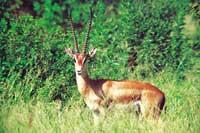
However, according to biological theories, a single disease cannot completely destroy the attacked species, since when few specimens remain, the pathogen is not able to spread sufficiently, that is, the pathogen will always disappear before the host. Or not?
Species A can disappear completely if it can survive in species B. During the investigation he has used two species of sits and a species of wasp that makes eggs on the banks of the dick and has seen that each of the species of wasp and sits, placed individually, can live indefinitely. Without fear the wasp cannot ensure its survival and, therefore, when the number of herbaceous is scarce, the wasp population also descends rapidly. Thus, the balance is not broken. However, one of the sit species disappeared completely after the sharing of the two sit species and the wasp, as the strongest sit species ensures the survival of the wasp. The grey squirrels of North America have almost completely replaced the common squirrels of Europe, more sensitive to a virus that attacks both.
Species B, that is, those that ensure the survival of the pathogen, are also more abundant than expected: domesticated animals, animals raised in captivity and even dead. The pathogen, therefore, does not have to disappear before the host separates the victims.
Beware of displacements
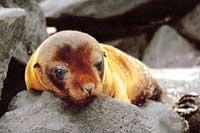
One of the tasks to prevent diseases from spreading is a good inspection of animals before being transported. In the decade 1980-90, for example, hunters displaced raccoons so that the population of animals increased in the United States and, without wanting to, managed to extend rabies. Biologists also have part of guilt. Many times the animals are collected (to investigate, care or cure) and then they are released again.
The possible infections of animals that enter reserves and leave the reserves must be studied, both before and after, if it is not desired to sustain. But the custom is not yet systematic. Taking measures and strengthening research is what should be done to know well how diseases affect biodiversity. Pollution is not everything.
Published in the supplement Natura de Gara

Gai honi buruzko eduki gehiago
Elhuyarrek garatutako teknologia



